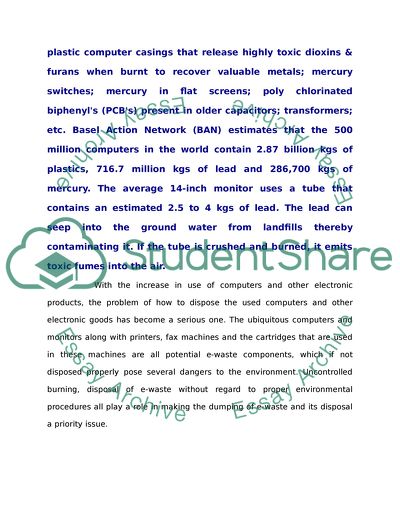Cite this document
(“EWaste Essay Example | Topics and Well Written Essays - 750 words”, n.d.)
EWaste Essay Example | Topics and Well Written Essays - 750 words. Retrieved from https://studentshare.org/miscellaneous/1515145-ewaste
EWaste Essay Example | Topics and Well Written Essays - 750 words. Retrieved from https://studentshare.org/miscellaneous/1515145-ewaste
(EWaste Essay Example | Topics and Well Written Essays - 750 Words)
EWaste Essay Example | Topics and Well Written Essays - 750 Words. https://studentshare.org/miscellaneous/1515145-ewaste.
EWaste Essay Example | Topics and Well Written Essays - 750 Words. https://studentshare.org/miscellaneous/1515145-ewaste.
“EWaste Essay Example | Topics and Well Written Essays - 750 Words”, n.d. https://studentshare.org/miscellaneous/1515145-ewaste.


